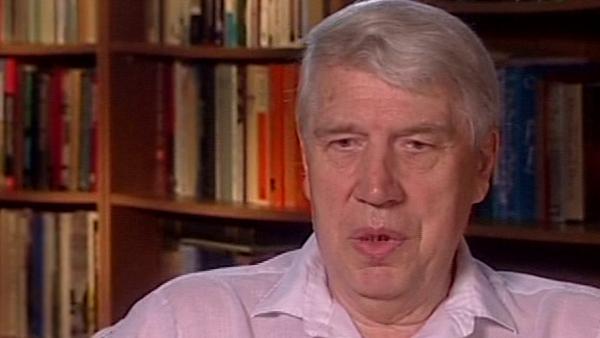NEXT STORY

Why it took us so long to find these antibodies
RELATED STORIES

NEXT STORY

Why it took us so long to find these antibodies
RELATED STORIES


|
Views | Duration | |
|---|---|---|---|
| 51. Difficulty of explaining the H2 system | 33 | 05:47 | |
| 52. Working on H2 with Hugh McDevitt | 86 | 04:50 | |
| 53. The two-locus model of H2 | 37 | 07:06 | |
| 54. Publishing a controversial essay | 60 | 03:53 | |
| 55. Presenting the H2 locus model in Asilomar | 32 | 02:17 | |
| 56. Editor-in-chief of the new Immunogenetics journal | 36 | 03:44 | |
| 57. The role of lymphocytes in H2 | 26 | 04:30 | |
| 58. Using cytotoxicity and immunofluorescence | 37 | 04:09 | |
| 59. Why it took us so long to find these antibodies | 28 | 05:36 | |
| 60. Competing with Shreffler's lab | 25 | 02:55 |


So, we had to switch to a different method and that was not as simple as it appears today. I should also perhaps say that for the people... young people who have no idea of history of science that the problem that we were facing seemed to be trivial. Of course today you would just take that region, clone it and see what genes are there and see what would be the best candidates for the IR1 genes. Of course at that time this approach was not available and for many years still remained unavailable, so we had to do with what was available and those were the various serological methods. So, besides agglutination, which was the most commonly used method, there were some others. One was recently developed method of cytotoxicity, lympho-cytotoxicity. That means instead of... so you still work with antisera, antibodies in sera, but the target now was lymphocyte and the readout of the test was killing of the lymphocytes by the antibodies, but antibodies themselves cannot kill a lymphocyte. The actual killing of cells is mediated by a very complex set of proteins that is referred to as complement, so there are many complement components and they together assemble on the antibody that has bound to the antigen and when that happens then the signal is sent through the interacting complex to punch holes in the membrane and thus lyse the cell and so kill it. And that can be visualised by, for instance, giving a dye in the... vital dye in the reaction mixture which the dead cells would pick up and then you can count blue cells against white cells and so determine the toxicity, whether... by cytotoxicity, whether the target cells have the antigens or not. So, that was one method.
The other method that became available was immunofluorescence where you labelled the antibodies with a dye that under a UV light gave up a different colour and you can again count stained cells in contrast to those that were negative. Both assays were not without problems. I'm not going to go in any of the details, but technically they were not as simple as it seems. I should also perhaps mention that later both of them were quantified and mechanised in a way that some devices can do actually the counting of the positive cells and that became more objective. But at that stage, when we began, you had to spend hours peering into the microscope counting the live and dead cells in many different combinations.
Born in 1936, Jan Klein is a Czech-American immunologist who co-founded the modern science of immunogenetics – key to understanding illness and disease. He is the author or co-author of over 560 scientific publications and of seven books including 'Where Do We Come From?' which examines the molecular evolution of humans. He graduated from the Charles University at Prague in 1955, and received his MS in Botany from the same school in 1958. From 1977 to his retirement in 2004, he was the Director of the Max Planck Institute for Biology at Tübingen, Germany.
Title: Using cytotoxicity and immunofluorescence
Listeners: Colm O'hUigin
Colm O'hUigin is a senior staff scientist at the US National Cancer Institute. He received his BA, MSc and PhD at the Genetics Department of Trinity College, Dublin where he later returned as a lecturer. He has held appointments at the Center for Population and Demographic Genetics, UT Houston, and at the University of Cambridge. As an EMBO fellow, he moved in 1990 to the Max Planck Institute for Biology in Tübingen, Germany to work with Jan Klein and lead a research group studying the evolutionary origins of immune molecules, of teeth, trypanosomes and of species.
Tags: cytotoxicity, lympho-cytotoxicity, immunofluorescence, antisera, serology
Duration: 4 minutes, 9 seconds
Date story recorded: August 2005
Date story went live: 24 January 2008